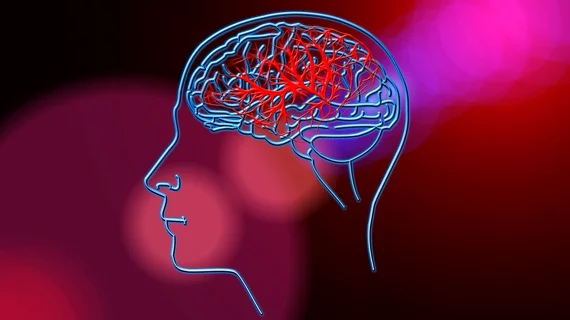Some neurovascular imaging studies are overutilized in stroke triage
Triaging patients with stroke-like symptoms using MRI with diffusion-weighted imaging (DWI) could reduce the cost burden associated with unnecessary neurovascular imaging procedures.
Experts arrived at this conclusion after conducting an analysis of nearly 400 patients who underwent neurovascular imaging from 2015-2018 after presenting to an emergency department for transient neurological deficits. Out of the 398 patients, just 28.1% were diagnosed with transient ischemic attacks, despite 84% undergoing neurovascular imaging for suspected TIA. This represents “a suboptimal use of imaging resources,” co-senior author Vivek Yedavalli, from the Russell H. Morgan Department of Radiology and Radiological Science with Johns Hopkins Medical Institutions, and colleagues explained in the European Journal of Radiology.
In the paper, the experts noted that TIAs can be challenging to diagnose due to a myriad of symptoms that mimic TIA but are due to other low-risk, non-cerebrovascular conditions. Patients presenting with “TIA-mimics” will often undergo advanced neurovascular imaging, yet they will not receive a formal diagnosis of a true TIA.
“Since TIA underdiagnosis can have significant consequences (subsequent recurrent episodes and/or stroke), physicians have begun to err on the side of caution, leading to potential overdiagnosis of TIA,” the authors said.
In their study, 71.9% of patients were diagnosed with non-vascular etiology. Out of the 84% of patients who underwent MRA/CTA studies,10.5% had severe intracranial stenosis, while 1.7% were found to have cervical vessel stenosis. The rate of vascular stenosis was significantly higher in the patients with DWI scans (24.4% versus 7.8% intracranially and 2.4% versus 0.9% in the neck), which argues the case for the utility of such imaging in a triage role, the authors suggested.
“In patients who are at lower risk particularly those with negative DWI brain scans, and patients with neurological and/or psychiatric conditions that could mimic TIA, the value of these acutely performed MRA/CTA may be questioned.”
The expert continued by suggesting that patients with negative DWI scans could be referred to non-acute lower cost outpatient settings, saving time and expenses for both patients and providers.
View the detailed research in the European Journal of Radiology.
Related stroke imaging content:
'One-stop-shop' CT protocol saves time, reduces radiation needed for acute stroke imaging
New CT protocol uses scout images to expedite stroke patients' path to MRI
Radiologists must change their approach to stroke care in the AI era
Disparities evident as CT stroke imaging rises sharply over 7-year period

